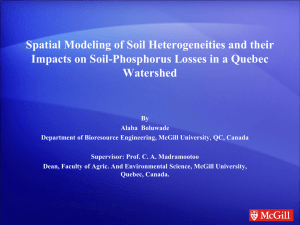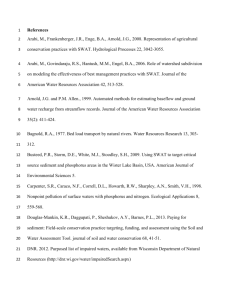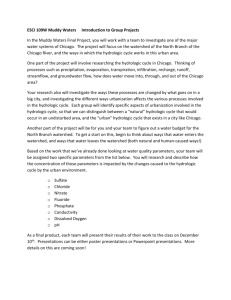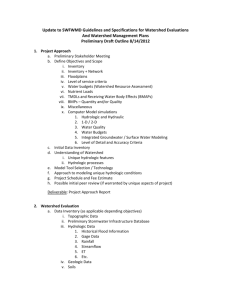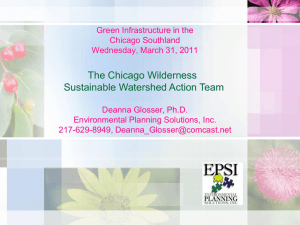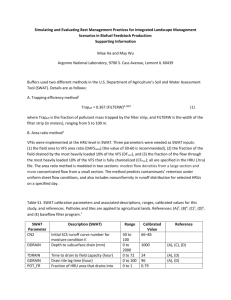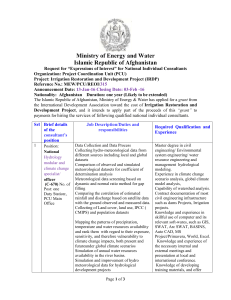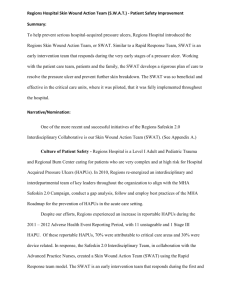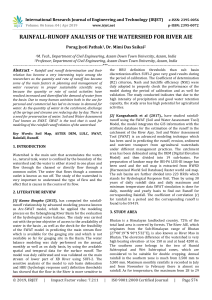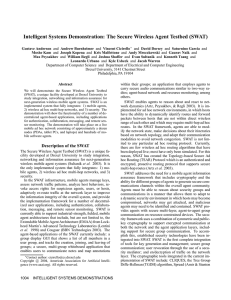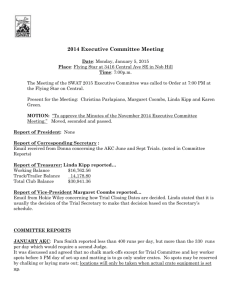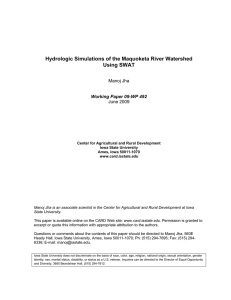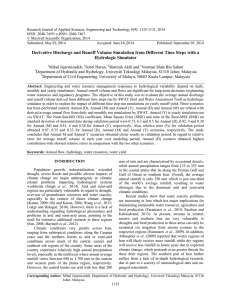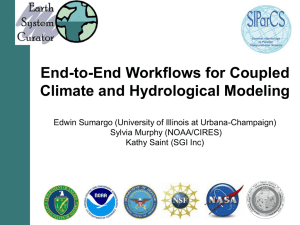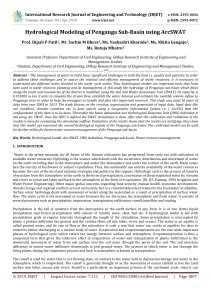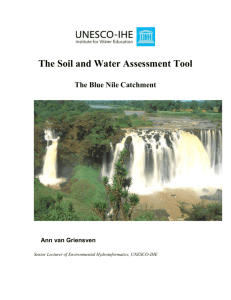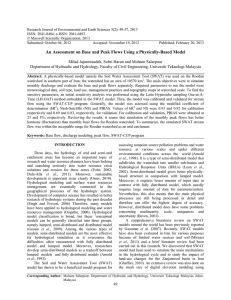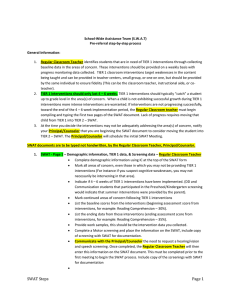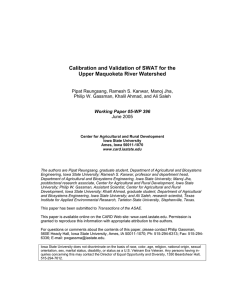A comparison of RHESSys and SWAT for modeling of water yield
advertisement
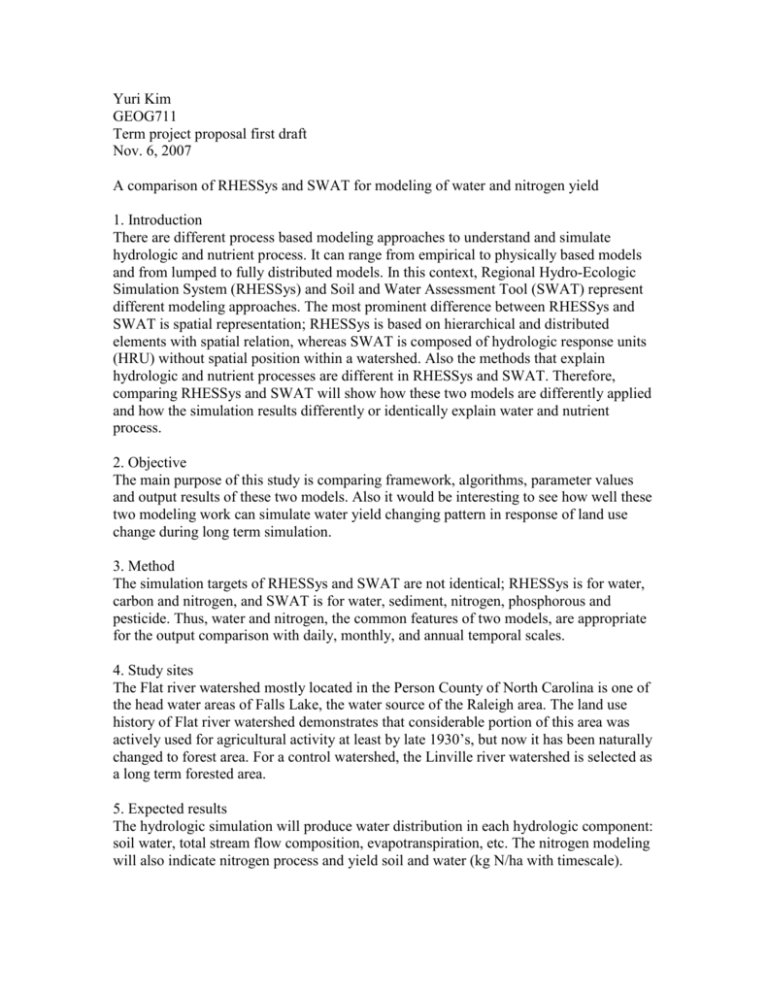
Yuri Kim GEOG711 Term project proposal first draft Nov. 6, 2007 A comparison of RHESSys and SWAT for modeling of water and nitrogen yield 1. Introduction There are different process based modeling approaches to understand and simulate hydrologic and nutrient process. It can range from empirical to physically based models and from lumped to fully distributed models. In this context, Regional Hydro-Ecologic Simulation System (RHESSys) and Soil and Water Assessment Tool (SWAT) represent different modeling approaches. The most prominent difference between RHESSys and SWAT is spatial representation; RHESSys is based on hierarchical and distributed elements with spatial relation, whereas SWAT is composed of hydrologic response units (HRU) without spatial position within a watershed. Also the methods that explain hydrologic and nutrient processes are different in RHESSys and SWAT. Therefore, comparing RHESSys and SWAT will show how these two models are differently applied and how the simulation results differently or identically explain water and nutrient process. 2. Objective The main purpose of this study is comparing framework, algorithms, parameter values and output results of these two models. Also it would be interesting to see how well these two modeling work can simulate water yield changing pattern in response of land use change during long term simulation. 3. Method The simulation targets of RHESSys and SWAT are not identical; RHESSys is for water, carbon and nitrogen, and SWAT is for water, sediment, nitrogen, phosphorous and pesticide. Thus, water and nitrogen, the common features of two models, are appropriate for the output comparison with daily, monthly, and annual temporal scales. 4. Study sites The Flat river watershed mostly located in the Person County of North Carolina is one of the head water areas of Falls Lake, the water source of the Raleigh area. The land use history of Flat river watershed demonstrates that considerable portion of this area was actively used for agricultural activity at least by late 1930’s, but now it has been naturally changed to forest area. For a control watershed, the Linville river watershed is selected as a long term forested area. 5. Expected results The hydrologic simulation will produce water distribution in each hydrologic component: soil water, total stream flow composition, evapotranspiration, etc. The nitrogen modeling will also indicate nitrogen process and yield soil and water (kg N/ha with timescale).
